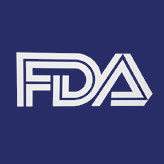FDA Approves Brentuximab Vedotin for Hodgkin Lymphoma and Systemic Anaplastic Large-Cell Lymphoma
The U.S. Food and Drug Administration (FDA) announced last week the approval of brentuximab vedotin, a CD30-directed antibody drug-conjugate, for the treatment of refractory Hodgkin lymphoma and systemic anaplastic large-cell lymphoma.

The US Food and Drug Administration (FDA) announced last week the approval of brentuximab vedotin (Adcetris), a CD30-directed antibody drug-conjugate, for the treatment of refractory Hodgkin lymphoma and systemic anaplastic large-cell lymphoma (ALCL). The drug is approved for the treatment of patients with Hodgkin lymphoma whose disease has progressed after autologous stem cell transplant, or after 2 prior multiagent chemotherapy treatments among patients ineligible to receive a transplant, and is the first new FDA-approved treatment for Hodgkin lymphoma in over 30 years. It is also the first treatment specifically indicated to treat ALCL, approved for those patients whose disease has progressed after 1 prior chemotherapy treatment.
"This drug has turned out to be remarkably effective for the treatment of Hodgkin's lymphoma and constitutes a major step forward in managing the disease overall," said Joseph Connors, MD, director of the Centre for Lymphoid Cancer in Vancouver, British Columbia, speaking in an interview with CancerNetwork earlier this year at the American Society of Clinical Oncology annual meeting in Chicago. Dr. Connors was involved in the two pivotal clinical trials that led to the drug's approval. "It's what one might refer to as a magic bullet or a targeted agent."
One of the defining features of Hodgkin lymphoma is CD30 expression by Reed-Sternberg cells. Brentuximab vedotin consists of two parts, an anti-CD30 antibody conjugated by a plasma-stable linker to the potent antimicrotubule agent, monomethyl auristatin E (MMAE).
"One part sticks right on the surface of Hodgkin's lymphoma cells and only those cells, ignoring all the other normal cells of the body," said Dr. Connors. Brentuximab vedotin binds to the CD30-positive cells and selectively induces apoptotic death of these cells by internalizing and releasing MMAE. "Once it's stuck on there the cell sucks it inside and dissolves away part of it, releasing the chemical that actually damages the cell. So the slick part is that it delivers the chemotherapy to the cells that you want to get rid of and spares all the other cells in the body."
In a phase I, open-label, multicenter dose-escalation study published late last year in the New England Journal of Medicine, researchers reported that the maximum tolerated dose was 1.8 mg/kg, administered every 3 weeks. In total, 45 patients with refractory CD30-positive hematologic cancers were treated in the study. Tumor regression was observed in 36 of 42 patients who could be evaluated (86%). Objective responses were observed in 17 patients, 11 of whom had complete remissions. Twelve patients were given the maximum tolerated dose, of whom 6 (50%) had an objective response. The median duration of response was at least 9.7 months.
The FDA approval came as a result of two pivotal phase II clinical trials in which brentuximab vedotin was administered intravenously at a dose of 1.8 mg/kg over the course of 30 minutes once every 3 weeks. The results were presented this year at ASCO. The first study (n = 102) found an objective response rate of 75% (76 of 102) in patients with Hodgkin lymphoma, with complete remissions in 34% (n = 35). The average duration of response was 6.7 months. The second study (n = 58) showed an objective response rate of 86% (50 of 58) in patients with ALCL, and complete remissions in 53% (n = 31). The median response duration was 12.6 months. Treatment with brentuximab was associated primarily with grade 1 or 2 (mild-to-moderate) toxic effects. Diarrhea, nausea, neutropenia, thrombocytopenia, upper respiratory infection, peripheral neuropathy, fatigue, and pyrexia were the most common adverse events, according to the FDA.
The drug has been approved under the FDA's accelerated approval program. This allows the agency to approve a drug to treat a serious disease based on clinical data showing that the drug has an effect on a surrogate endpoint that is reasonably likely to predict a clinical benefit to patients. The program is designed to provide patients with earlier access to promising new drugs. "Early clinical data suggest that patients who received Adcetris for Hodgkin lymphoma and systemic anaplastic lymphoma experienced a significant response to the therapy," said Richard Pazdur, MD, director of the Office of Oncology Drug Products in the FDA's Center for Drug Evaluation and Research. Now that brentuximab vedotin has been approved under this program, Seattle Genetics of Bothell, Washington, who markets the drug in the United States, will be required to submit additional clinical information to confirm the drug's clinical benefit.